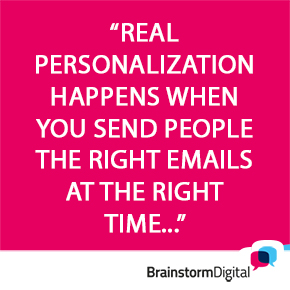
Every second year, around Easter time, my whole family goes away together to Scottsdale, Arizona, for a few days of R&R.
We live on three different continents, so the family reunion is always the highlight of our year. (My kids think it’s the highlight of their life.)
But the whole experience is made even more special because of the hotel where we stay. Without naming names, the level of customer service is second-to-none. And that’s not just while we’re there – but long before we arrive and after we leave.
For example, several weeks before we’re due in AZ, the hotel emails us a list of all the local attractions, and the concierge’s number in case we want help booking. They also want to know, in advance, if we have any special requirements.
After we’ve gone, there’s another set of emails. Did we have a good stay? Do we have any feedback? They really want to see us again…. 🙂
I know it’s just an email automation but it feels like they go out of their way to make us feel welcome, and wrote these emails specially for us.
It’s a terrific example of how to do “personalization” right.
Send the right emails at the right time
“Personalization” is one of the holy grails in email marketing. The idea is that, where possible, you want your readers to forget you’re writing to thousands of people at once, and feel like you’re writing to them individually.
Some businesses believe that they accomplish this by using their subscriber’s name as often as possible. They don’t – that’s just a gimmick.
Real personalization happens when you send people the right emails at the right time… When they get an email and think: “Yes! That is exactly what I needed right now. This is really relevant to me.”
So how do you do that?
Readers leave clues
Obviously, you’re not a telepath and can’t usually tell what your subscribers want to read about at any given moment. But sometimes they drop some pretty heavy clues through the actions they take….
If you’re in the hotel business, it’s obvious. A guest makes a booking – they’re going to want to get a confirmation. The day before they arrive they might want to know about check-in and local transport. Once they check out again, they’re going to want the chance to give feedback, and maybe the chance to book again at a discount.
Simple. (Although it’s shocking how few hotels do most of that.)
But what about your readers? They take some pretty significant actions too…
>> They join your list and become a subscriber
>> They download your eBooks
>> They attend webinars or live events
>> They visit particular pages on your website
>> They make enquiries, click through to your sales pages and hopefully buy from you eventually
>> If you’re an online retailer, they might start a purchase they don’t complete
>> Sadly, they might also stop reading your emails. No action is, in this sense, an action too.
At each one of these points, they have specific needs which you can answer in an automated sequence.
So for example, a new subscriber might appreciate a confirmation they’re now on your list, a warm welcome and details about what to expect next.

Readers who have just downloaded an eBook might like some more information about that topic, or a related offer.
You can ask people who’ve stopped reading your emails whether they still want to hear from you.
…And so on.
While the emails your subscribers are getting may not be unique, their journey with you is. No one else is getting the emails in the same order or at exactly the same time.
Subscribers will feel you can read their minds
When you get this right, something amazing will happen.
Your subscribers will start to feel that you’re talking directly to them…. That somehow, miraculously, you can read their minds. (Of course, what you’re actually reading is their data…..)
Everything you say to them is more likely to hit the spot, because it’s timely.
And if you can time your offers so they’re made at relevant moments, too…?
You’re sitting on a pot of gold.
How do you personalize your marketing? Has it made a difference to your results? Tell me about it in the comments section below.
Miriam Shaviv is author of Discover how to write high-converting emails in 10 minutes or less – Guaranteed!
She is director of content at Brainstorm Digital, which helps companies generate leads, enquiries and sales online.






